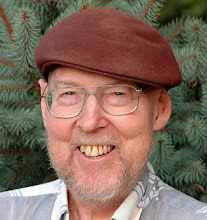| Today I have two new heroes, Gregory Lockett, a homeless man from Florida and Ray Anderson, chairman of a Georgia flooring manufacturing company that’s approaching $1 billon in sales.
Both Gregory, 48, and Ray, 72, are willing to take what I call the wilderness path to help their organizations thrive.
I met Gregory 12 days ago at the Pentecostal conference in Philadelphia. A man who has spent many years on the street, Gregory knows that homeless people are often arrested and then released without being charged.
When homeless people want to turn their lives around and get a job, their arrest records are a huge stumbling blocks even if they were never charged with a crime. Gregory knows because he’s been arrested 17 times but only charged and convicted three times.
Gregory, who has become a Christian, is launching FAVOC, an organization that works with homeless people who are “falsely accused victims of crime” to help clear up their arrest records to make it possible for them to get jobs.
All nonprofits start out on the wilderness path. They begin when the founders have an idea of how to meet an existing social need that is not currently being met. Nonprofits begin with a trip into the wilderness to discover the treasure that emerges when you create an organization that meets a powerful human need.
As Gregory takes the wilderness path, dealing with all the unknowns of creating a viable nonprofit organization, Evergreen Leaders has offered to provide the consulting services. I’ve never met Ray Anderson but he became one of my heroes when I read about him in an Inc. magazine story. When Ray started Interface, a flooring manufacturing business 33 years ago he made sure it complied with environmental laws but he never thought about its impact on the environment. Then in 1994 he read The Ecology of Commerce by businessman Paul Hawken who is deeply concerned about what industry does to the environment.
After reading Hawken’s book Ray “asked his engineers to determine what had been extracted from the earth to produce the company’s income.” The engineers determined that it took 1.2 billion pounds of raw materials to produce the companies $800 million in income that year.
“I was staggered,” Anderson said later, “I wanted to throw up. My company’s technologies and those of every other company I know of anywhere, in their present forms, are plundering the earth. This cannot go on and on and on.”
Anderson decided to take the wilderness path, a completely unknown path for an industrial giant. He was going make Interface a sustainable company. He defines sustainability as “taking from the earth that is not rapidly and naturally renewable, and doing no harm to the biosphere.”
Their first steps focused on waste reduction and the company saved $60 million in the first three years. That was just the beginning on their long and arduous journey to sustainability.
Interface has been on this wild path since 1994 and they project that by 2020 they will be completely sustainable.
Gregory is taking the wilderness path to create FAVOC, an organization that will help homeless people clean up old arrest records as part of helping them find work.
And Ray is taking Interface on the wilderness path as a way to help the company move from plundering the environment to sustaining a healthy environment.
You can learn more about the wilderness path on the 7 Paths blog. Wisdom for the week: It takes a long journey into the wilderness to discover the treasure your organization has to offer the world.
Fair thee well, Rich |


No comments:
Post a Comment